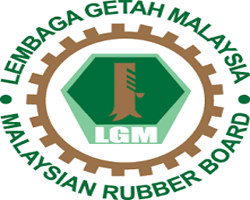Woodsworth, G. J. and Roddick, J. A. (1977) Mineralization in the Coast Plutonic Complex of British Columbia, south of latitude 55°N. Bulletin of the Geological Society of Malaysia, 9. pp. 1-16. ISSN 2637-109X
Full text not available from this repository.Abstract
Compared with the flanking Insular and Intermontane Belts, the Coast Plutonic Complex contains few mineral deposits. Two quartz-vein gold camps, one massive sulphide body, and one ultramafic complex have accounted for 18% of the copper, 29% of the gold, and all the nickel produced from British Columbia. Mineral deposits and occurrences are concentrated in two segments of the Coast Plutonic Complex that are adjacent to two mineralized segments of the Intermontane Belt. Pyrite, chalcopyrite, sphalerite and galena are the dominant sulphides regardless of age or type of deposit. Small, lenticular replacement bodies in skarn and schist are the most common deposits. Many of these are situated along and near northwest-trending faults. Pyritic massive sulphide bodies occur in Paleozoic(?) to Early Cretaceous metamorphic rocks. Miocene porphyry copper and molybdenum deposits form a discontinuous chain running longitudinally through the Southern Coast Mountains. Older porphyry deposits are situated along and near the eastern margin and near the western margin of the southern Coast Mountains. Nickel-copper deposits are associated with an ultramafic complex at the southeast end of the Coast Plutonic Complex. The distribution of mineral deposits among the lithologies of the Coast Plutonic Complex is similar to the distribution of accessory pyrite. Pyrite is abundant in pendant rocks, and about two-thirds of all known deposits occur in the pendants. In plutonic rocks pyrite is found mainly in hornblende-rich diorites and quartz diorites, particularly those showing extensive chloritization, epidotization, or pink hydrothermal alteration. Almost all mineral deposits hosted by plutonic rock are in quartz diorite and diorite, and the plutonic rocks adjacent to most pendants are also quartz diorite or diorite. Few deposits have been found in the Central Gneiss Complex or in plutons immediately east.
| Item Type: | Article |
|---|---|
| Creators: | Woodsworth, G. J. and Roddick, J. A. |
| Title: | Mineralization in the Coast Plutonic Complex of British Columbia, south of latitude 55°N |
| Date: | November 1977 |
| Location: | Geological Society of Malaysia website |
| Publication: | Geological Society of Malaysia |
| Volume: | 9 |
| Physical Description: | 16p. |
| Agency Name: | Universiti Putra Malaysia (UPM) |
| Date Deposited: | 07 May 2024 04:05 |
| Last Modified: | 07 May 2024 04:05 |
| URI: | http://myagric.upm.edu.my/id/eprint/21591 |
Actions (login required)
 |
View Item |







